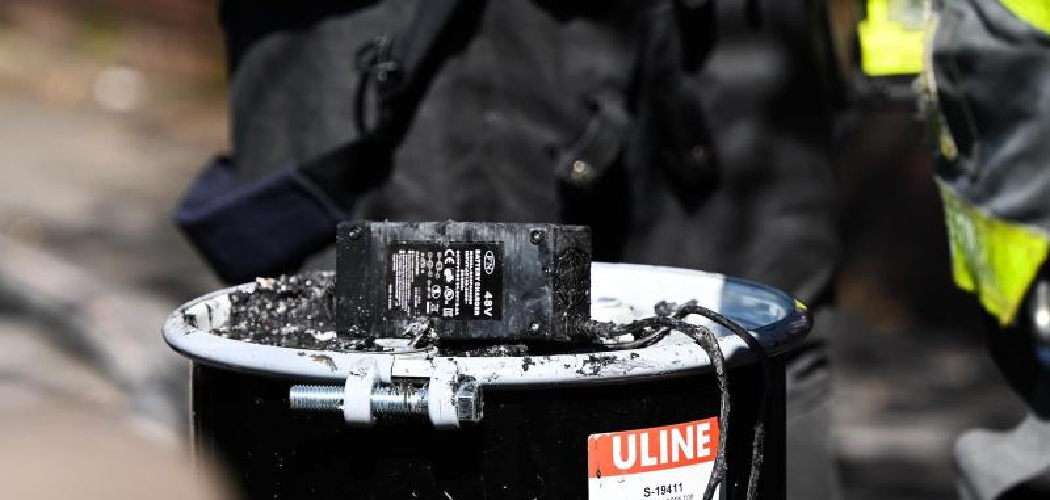Are you aware of the potential dangers associated with lithium batteries? These small, compact power sources are becoming increasingly common in our everyday devices such as smartphones, laptops, and even electric vehicles.
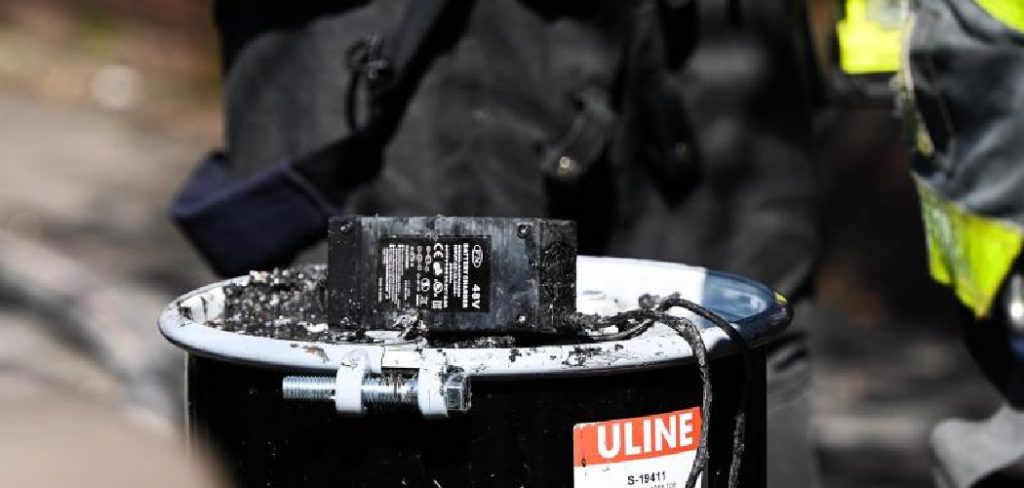
While they provide convenient and long-lasting energy, they also pose a fire hazard if improperly handled. Lithium battery fires are unique and can be particularly challenging to handle due to lithium-ion cells’ chemistry and energy density.
Unlike traditional fires, lithium battery fires cannot be extinguished using common fire-fighting methods such as water or standard fire extinguishers. Understanding the specific steps and safety measures required to extinguish a lithium battery fire effectively is crucial.
This guide will provide comprehensive instructions on how to extinguish a lithium battery fire, ensuring personal safety and property protection.
What are the Benefits of Lithium Batteries?
Before discussing how to extinguish a lithium battery fire, let’s first understand the benefits of these types of batteries.
- Higher Energy Density: Lithium batteries have a much higher energy density than traditional batteries, which can store more energy in a smaller space.
- Longer Lifespan: With proper care and usage, lithium batteries can last 2-3 times longer than traditional batteries.
- Fast Charging: Most lithium batteries can charge quickly, making them convenient for on-the-go use.
- Lightweight: Lithium batteries are lightweight due to their compact size and high energy density, making them ideal for portable devices.
These benefits have made lithium batteries a popular choice for powering our everyday devices, but it’s essential to handle them with caution and respect their potential hazards.
What Will You Need?
Before attempting to extinguish a lithium battery fire, there are a few essential items you will need:
- Personal Protective Equipment (PPE): It’s crucial to protect yourself from the potential hazards of a lithium battery fire. Wear heat-resistant gloves, safety glasses, and long sleeves to minimize any risk of injury.
- Class D Fire Extinguisher: These specialized extinguishers, including lithium batteries, are designed specifically for metal fires.
- Sand or Dry Powder: If a class D extinguisher is unavailable, sand or dry powder can also be used as an alternative.
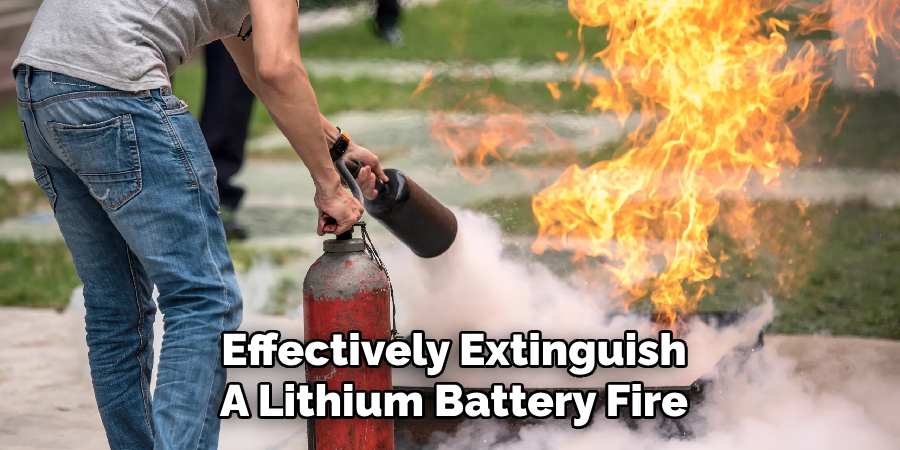
Once you have these items, you can safely and effectively extinguish a lithium battery fire.
10 Easy Steps on How to Extinguish a Lithium Battery Fire
Step 1. Assess the Situation:
The first step in handling a lithium battery fire is to carefully assess the situation without putting yourself at undue risk. Determine the size and intensity of the fire as well as the environment in which it is occurring.
Ensure you have a clear evacuation path and no immediate dangers to yourself or others. Ensure you wear the proper Personal Protective Equipment (PPE) before approaching the fire.
Evaluate if the fire is manageable with the resources you have on hand. If the fire is too large or you lack the proper tools, immediately evacuate the area and call emergency services.
Step 2. Alert Others:
Quickly notify anyone in the immediate vicinity about the fire. This is crucial for ensuring everyone’s safety and rallying any additional help if needed. Use clear and calm communication to inform them of the fire and its potential dangers.
If you are in a public area or building, trigger the fire alarm to alert others and facilitate an organized evacuation. The quicker people are made aware, the safer everyone will be.
Step 3. Isolate the Area:
If it’s safe to do so, isolate the area where the fire is occurring to prevent it from spreading. Close doors and windows to contain the fire within a specific space.
This can help limit the oxygen supply to the fire, reducing its intensity and giving you more control over the situation. Make sure to keep a safe distance and avoid inhaling any smoke or fumes, as they can be toxic.
Step 4. Disconnect Power Source:
If possible, safely disconnect the lithium battery from the power source. This can help prevent additional electrical energy from feeding the fire. However, exercise extreme caution when approaching the battery, as it may be unstable and pose further risks.
Do not attempt to move a burning battery unless absolutely necessary and it can be done safely.
Step 5. Use Class D Fire Extinguisher or Sand/Dry Powder:
Approach the fire with your Class D fire extinguisher or, if unavailable, sand or dry powder. Aim the nozzle at the base of the fire, not the flames, to effectively smother it.
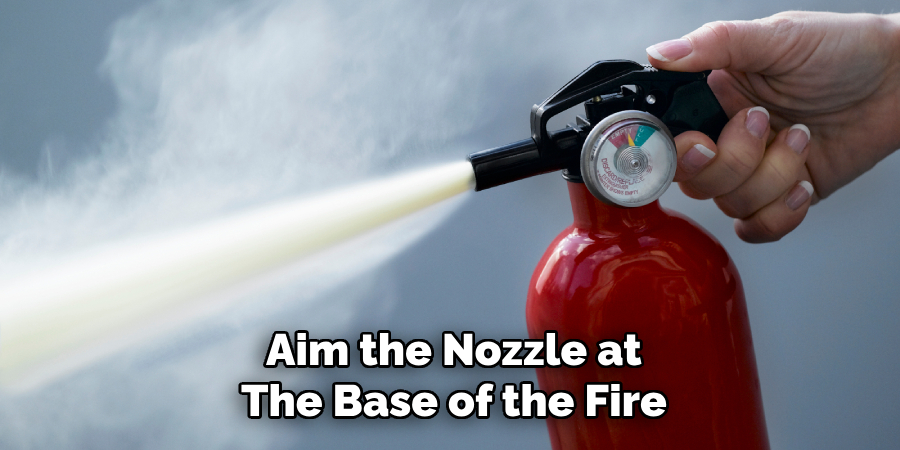
For Class D extinguishers, follow the manufacturer’s instructions for proper usage. If you use sand or dry powder, carefully pour it over the burning battery to cover it entirely and cut off the oxygen supply.
Step 6. Monitor the Area:
After the fire appears to be extinguished, continue to monitor the area for any signs of re-ignition. Lithium battery fires have the potential to flare up again due to residual heat or ongoing chemical reactions within the battery cells.
Maintaining vigilance for at least 30 minutes after the fire has been put out is recommended to ensure it is completely extinguished.
Step 7. Ventilate the Area:
Once the fire is completely out and there are no signs of re-ignition, ventilate the area to disperse any lingering smoke or fumes.
Open doors and windows to allow fresh air to circulate. This will help clear out any harmful chemicals released during the fire and make the environment safer for re-entry.
Step 8. Cool Down the Battery:
If you have access to a fire-proof container or a metal bucket, carefully place the extinguished battery inside and cover it with sand or another cooling agent.
This step helps to gradually reduce the temperature of the battery, minimizing the risk of it catching fire again due to residual heat. Additionally, make sure to keep the container or bucket away from any flammable materials.
Step 9. Dispose of the Battery Properly:
After ensuring the battery is fully cooled and no longer poses a fire risk, dispose of it following local hazardous waste disposal guidelines. Do not throw the battery in regular trash as it can still pose a risk of fire or environmental harm.
Check with your local waste management services for proper disposal procedures.
Step 10. Report and Review:
Report the incident to the appropriate authorities or management, providing details about the situation and how it was handled.
Review the steps taken to extinguish the fire and learn from the experience to improve future preparedness. This will help prevent similar incidents and ensure better future response strategies for potential lithium battery fires.
By following these 10 easy steps, you can effectively extinguish a lithium battery fire and minimize the potential hazards it poses.
5 Additional Tips and Tricks
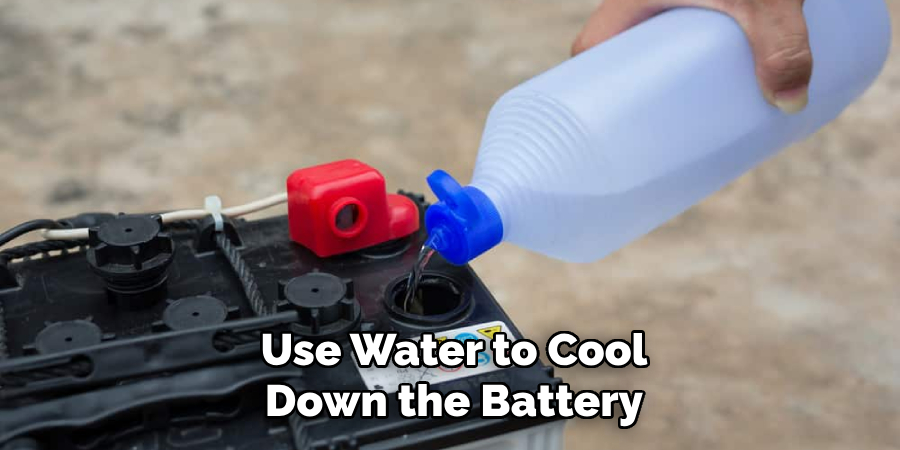
- Sand or Dirt Can Be Effective: If you don’t have a Class D fire extinguisher on hand, covering the fire with sand or dirt can help smother it. This method deprives the fire of the oxygen it needs to keep burning.
- Move to a Safe Area: If possible, move the burning battery to a safe, open area away from flammable materials. Use a shovel or fireproof gloves for protection. This can help contain the fire and reduce the risk of it spreading.
- Cool the Battery: If the fire is small and manageable, applying water to cool the battery can help, but it’s crucial to note that water will not extinguish the fire itself. Cooling helps prevent the fire from reigniting due to residual heat.
- Monitor for Reignition: Lithium battery fires can reignite even after they appear to be extinguished. Continuously monitor the area for any signs of smoke or flame resurgence and be ready to reapply extinguishing methods if necessary.
- Check for Potential Hazards: After the fire is out, inspect the surroundings for any other hazards such as damaged electrical equipment or chemical spills. Take proper precautions to avoid further danger.
These additional tips and tricks can be helpful in emergency situations where a lithium battery fire occurs.
5 Things You Should Avoid
- Using a Regular Fire Extinguisher: Standard fire extinguishers designed for Class A, B, or C fires are ineffective against lithium battery fires. Using them can be futile and may even exacerbate the situation.
- Throwing Water Directly on the Fire: Pouring water on a lithium battery fire can be dangerous. Due to the battery’s high heat and chemical composition, it can cause an explosive reaction.
- Ignoring Ventilation Needs: Lithium battery fires produce toxic fumes. Attempting to put out a fire in a confined space without proper ventilation can lead to inhalation of harmful gases.
- Using Flammable Materials: Attempting to smother the fire with flammable materials such as towels or blankets can fuel the fire instead of extinguishing it.
- Handling the Battery With Bare Hands: Avoid touching or moving the burning or damaged battery without appropriate protection. Direct contact can cause severe burns or exposure to hazardous chemicals.
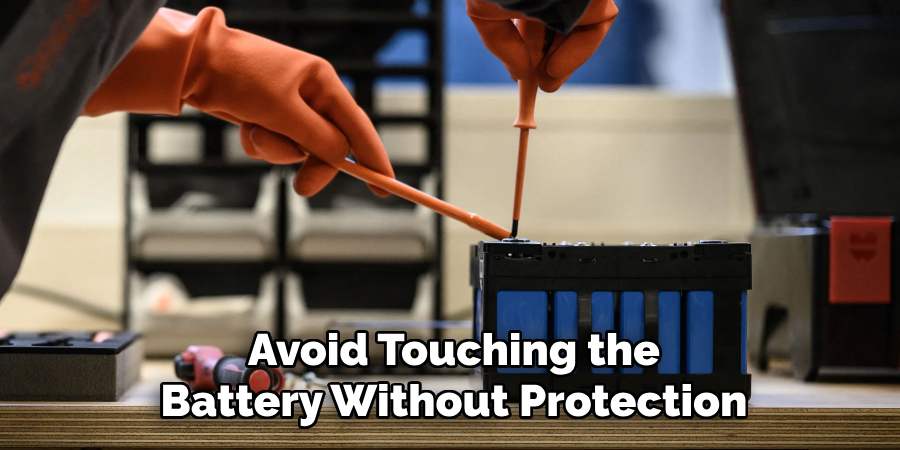
Being aware of these precautions is crucial to ensuring safety when dealing with lithium battery fires.
Conclusion
How to extinguish a lithium battery fire requires a specific set of actions to ensure safety and efficacy. The unique chemical nature of lithium batteries means that standard firefighting methods are often insufficient or hazardous.
The immediate danger can be managed by using sand or dirt to smother smaller fires, moving the burning battery to a safer location, cooling it with water appropriately, and continuously monitoring for reignition.
It’s equally important to avoid common mistakes such as using the wrong type of fire extinguisher, pouring water directly on the fire, ignoring ventilation requirements, using flammable materials, or handling the battery with bare hands.
Awareness and preparedness are key to tackling these challenging situations effectively. Implementing the tips and avoiding the pitfalls outlined in this guide can greatly enhance safety during a lithium battery fire incident.

